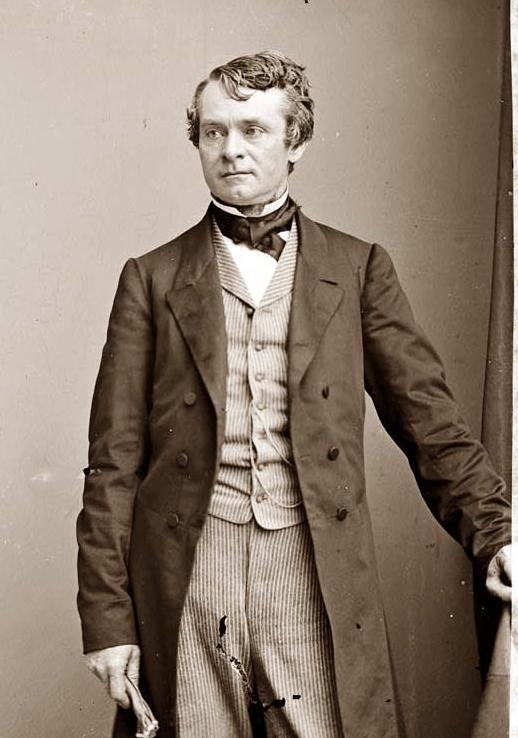Andrew Gregg Curtin, Civil War Governor of Pennsylvania
Posted By Norman Gasbarro on December 15, 2011
Andrew Gregg Curtin served as Governor of Pennsylvania for six years (two terms of three years) from 15 January 1861 to 15 January 1867. As Pennsylvania’s Civil War governor he took the lead among northern governors in supporting President Abraham Lincoln by raising troops, organizing them into combat units, setting up training camps (the first of which was set up at Harrisburg and named Camp Curtin), visiting soldiers in the field including those serving in the south, holding a wartime conference of northern governors aimed at coordinating war efforts, and providing for the care of soldiers who were wounded and for the families of those who were killed in the war. He was the leading force in establishing the Gettysburg National Cemetery and sat next to President Lincoln when he delivered the dedicatory address.
Andrew Curtin was the grandson of Andrew Gregg, a United States Senator from Pennsylvania who served in the period prior to the start of the War of 1812. As the governor of the state, he was the civilian Commander in Chief of Pennsylvania forces. Three of his first cousins were officers in the army during the Civil War: John I. Gregg; David McMurtrie Gregg; and John I. Curtin. His cousins led Pennsylvania regiments in which men from the Lykens Valley area served.
In 1844 Andrew Curtin married Catharine Irvine Wilson (1821-1903). The couple had nine children, eight of whom were born before the Civil War. The two sons among the nine children were born in the 1850s and were too young to serve in the military during the war.
Andrew Gregg Curtin was born on 22 April 1817 in Bellefonte, Centre County, Pennsylvania. His father, Roland Curtin, was a Irish immigrant who became an iron manufacturer in central Pennsylvania, establishing the Eagle Iron Works in 1810. Andrew received his education at the Bellefonte Academy and at Dickinson College and afterward began the practice of law. The first public office he held was Secretary of the Commonwealth of Pennsylvania, which was followed by an appointment as Superintendent of the Public Schools. Originally a Whig, Andrew Curtin switched parties in 1860 to run for governor as a Republican in the state election which preceded the national election by one month.
As governor, his quick action in calling for a draft, in mobilizing emergency militia, and in recommending to Lincoln the appointment of Gen. George Gordon Meade as Major General, is credited for saving Pennsylvania from being overrun by the rebel army commanded by Gen. Robert E. Lee.
All was not easy for Gov. Curtin early in the war as the stresses of office led to a partial mental breakdown, and while he was recovering, Pres. Lincoln offered him an ambassadorship, which he refused, choosing to stay the course and run for re-election in 1863. After the war, he did accept a position as Ambassador to Russia where he served during the Grant administration. Upon returning to the United States, he was elected to the U.S. House of Representatives where he served from 1881 to 1887. He then retired to Bellefonte where he died on 7 October 1894. He is buried in Union Cemetery in Bellefonte.
For previous blog posts which have discussed Gov. Curtin, click here. Some of the information for this post was taken from Wikipedia. The painting of Gov. Curtin is from the Capitol Preservation Committee website. The photograph is from Wikipedia and is in the public domain because its copyright has expired.
 ;
;




Comments